Fans and politicians gather to pay their respects to F1 legend Ayrton Senna on the 30th anniversary of his tragic death at Imola
The 30th anniversary of the death of Formula 1 icon Ayrton Senna is being commemorated with a memorial at Imola, as fans have gathered at the circuit where he crashed in 1994 to pay tribute.
Senna was the sport’s brightest star, a hero to millions, especially in his native Brazil, but on the seventh lap of the ill-fated San Marino Grand Prix – a weekend that had already claimed the life of Austrian Roland Ratzenberger – he left the road at 300 km/h and crashed into a concrete wall. He died instantly, aged 34.
Wednesday marks the 30th anniversary of the Senna’s death and the event was noted by fans who paid their respects.
In addition, F1 CEO Stefano Domenicali was joined by politicians from Brazil, Italy and Austria – in memory of Ratzenberger, who died during a qualifying session.
Flags, jerseys and posters with the Sao Paulo-born driver’s face adorned the gates of Imola on Wednesday, as many surrounded the monument in his honor and laid wreaths, lit candles and took a moment of reflection.
Tributes to Ayrton Senna graced the gates of the Imola circuit on the 30th anniversary of his death
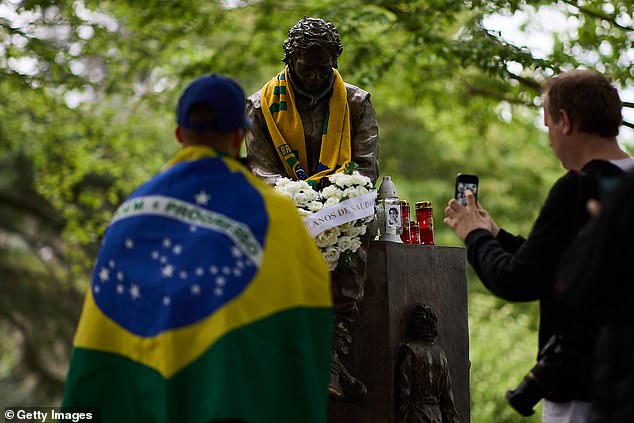
Fans visited the monument dedicated to the driver during an event to commemorate him
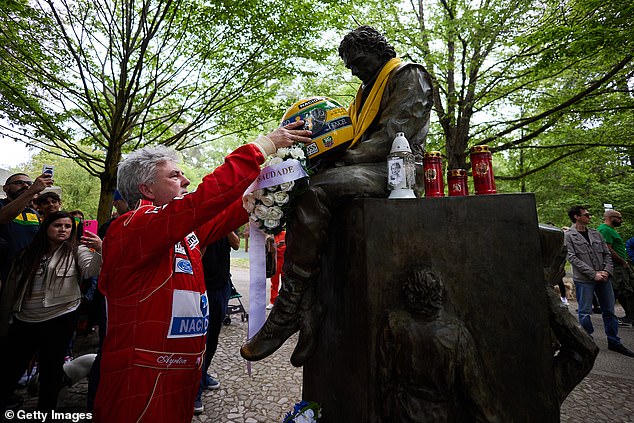
A replica of Senna’s iconic helmet was placed by a fan on the monument dedicated to him
Senna won his three World Championships with McLaren in 1988, 1990 and 1991. In 1994 he joined Williams following the retirement of Alain Prost.
This move had long been desired by Senna, but he was unhappy with the way his car performed after a number of rule changes and even predicted that a possible fatal accident could occur.
On the eve of the 1994 season he said: ‘The cars are very fast and difficult to drive. It will be a season with a lot of accidents and I dare say we will be lucky if something very serious doesn’t happen.’
And the fearful prophecy came true in Imola. While leading the race, Senna lost control of his Williams at the infamous Tamburello corner. The front right suspension of the three-time world champion’s car penetrated his crash helmet.
However, the race restarted less than 40 minutes later and Michael Schumacher won. Damon Hill crossed the line in sixth place in the other Williams, two places ahead of Martin Brundle.
During Saturday’s qualifying, Ratzenberger was killed when his car plowed into a concrete wall after the front wing of his Simtek Ford broke.
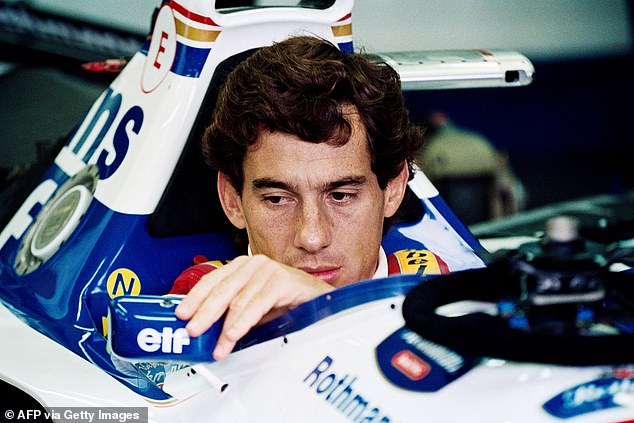
Senna adjusts his rear-view mirror in the pits before the 1994 San Marino Grand Prix
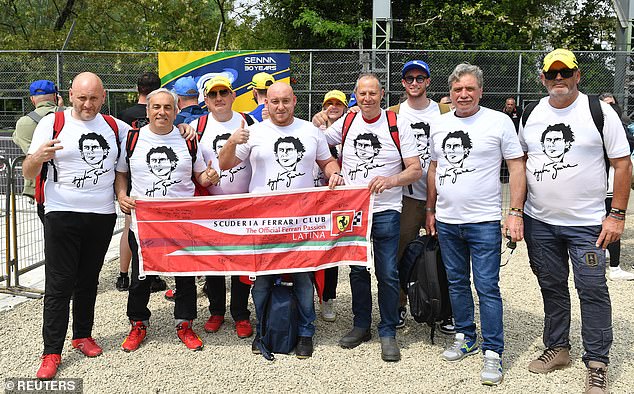
Fans from all over the world gathered to pay tribute to the late driver, including a group of Ferrari supporters
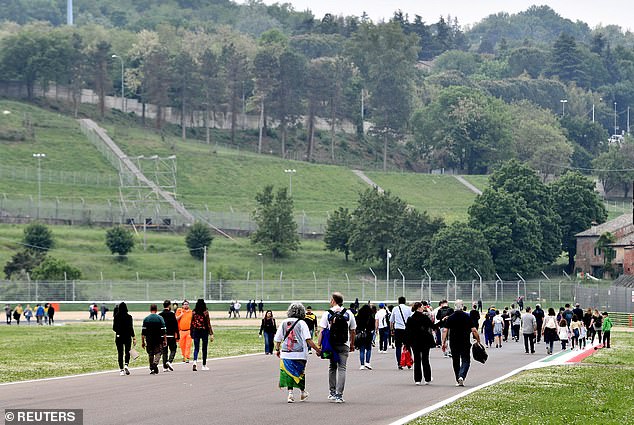
A number went to the circuit where Senna died just 24 hours after the death of fellow driver Roland Ratzenberger
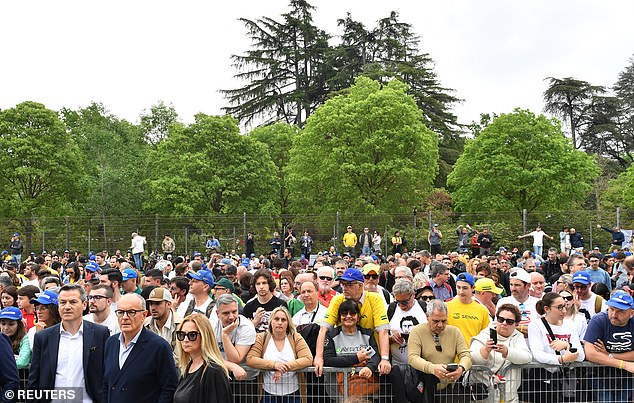
Dozens of people showed up to commemorate the date at the Autodromo Enzo e Dino Ferrari
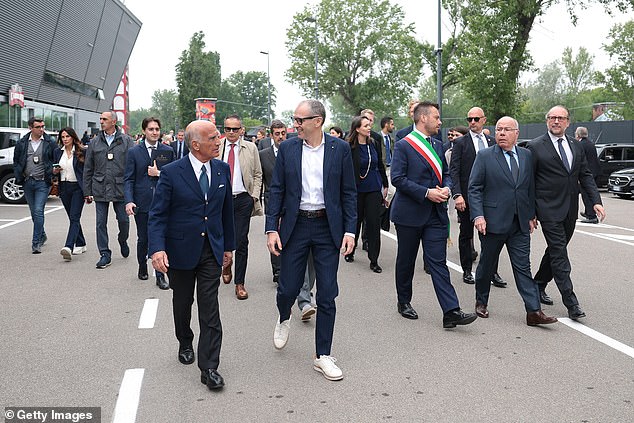
F1 CEO Stefano Domenicali (centre) was joined by politicians from Italy, Austria and Brazil
Senna’s death sparked a wave of safety improvements at the Imola circuit and across F1, resulting in shorter straights, extra space around dangerous corners and less powerful engines.
Former F1 CEO Bernie Ecclestone revealed this week that he had been told the sport would be canceled following the Brazilian driver’s death.
“It was just a disastrous weekend.” He told P.A. “If you think about all the things that happened, with Roland crashing and never getting out of his car, and then Senna, I really don’t think it would be possible for this to happen again.
‘Max (Mosley – then FIA president) said to me afterwards that he believed this would mean the end of Formula 1. I said, “I think you’re wrong and we’ll have to see.”
‘We hoped it wouldn’t cause what Max had suggested, but it was just a disaster. It wasn’t a good weekend and it seems much longer than 30 years to me. He was just unlucky enough to die in that accident.”
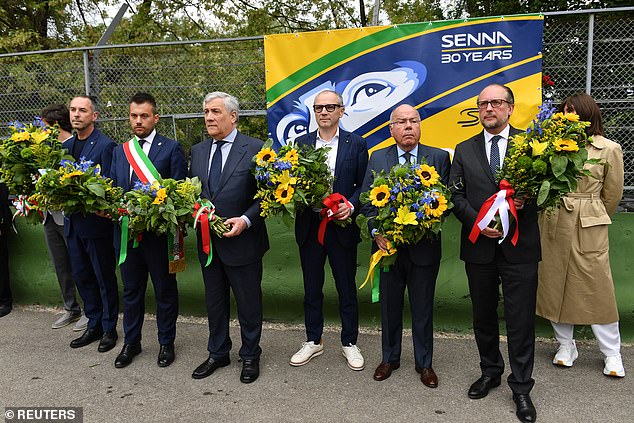
The foreign ministers of Brazil, Austria and Italy pose next to Domenicalli in front of a banner with flowers, right at the point of the crash that killed Senna
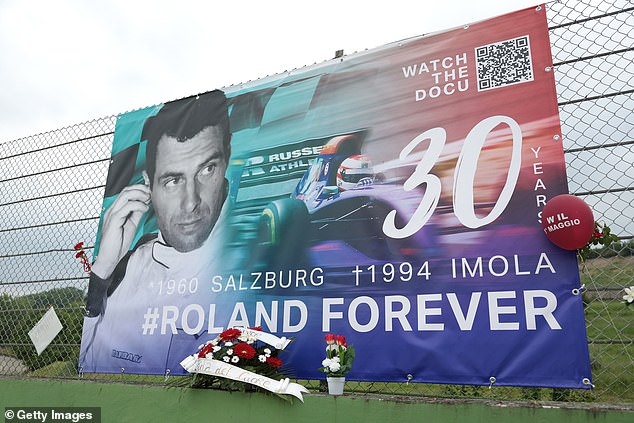
Tribute was also paid to the Austrian Ratzenberger, who died the day before Senna in 1994.
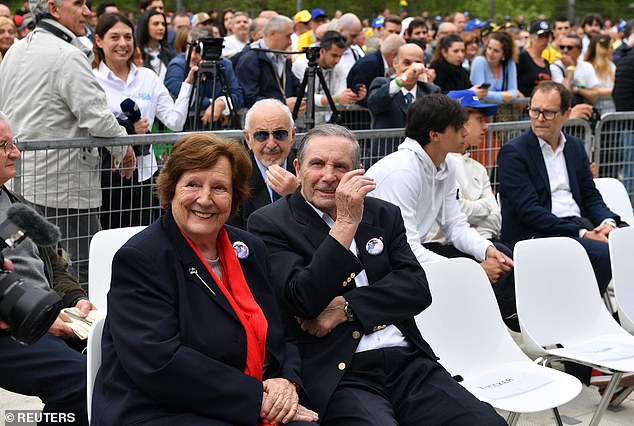
Ratzenberger’s mother, Margit Ratzenberger, and father Rudolf Ratzenberger were among those present at the ceremony
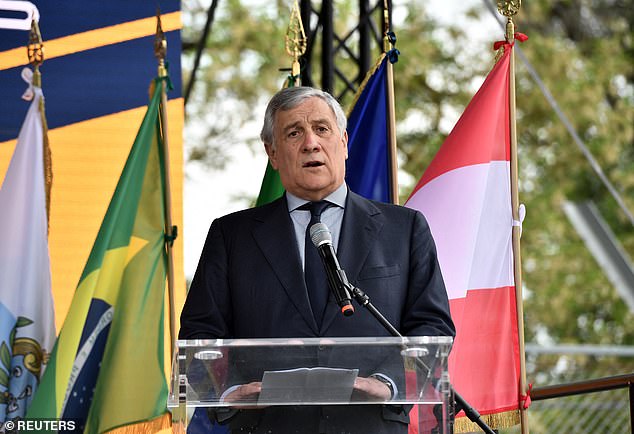
Italian Foreign Minister Antonio Tajani (photo) spoke at the ceremony on Wednesday
Senna remains the last driver to die during an F1 race. Jules Bianchi died nine months after the injuries he sustained during the Japanese Grand Prix ten years ago.
“Formula 1 became more popular after Senna’s death,” Ecclestone added. ‘It received so much publicity worldwide that people who had not seen Formula 1 before became interested.
“But I hope we never see anything like that again, and I think today, with the way everything has improved in terms of safety, thank God the chances are so much lower.”
